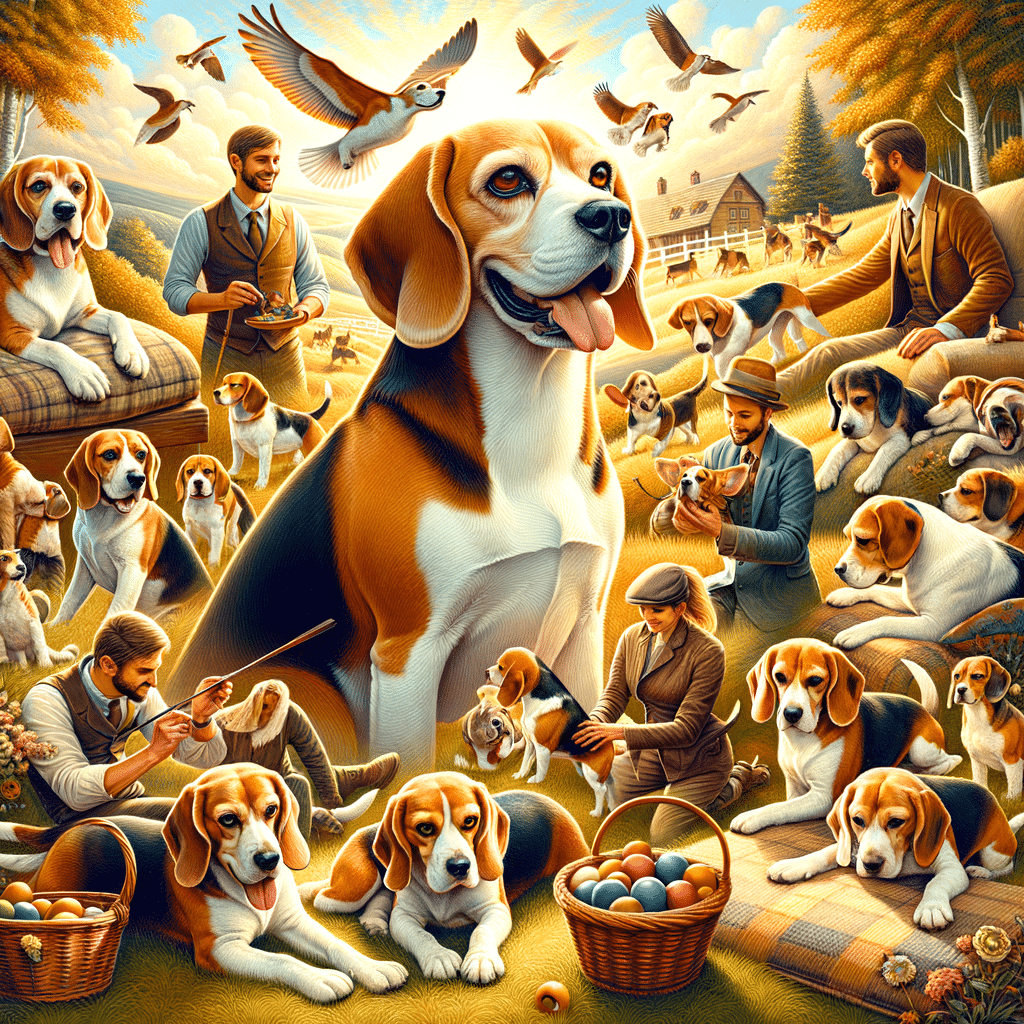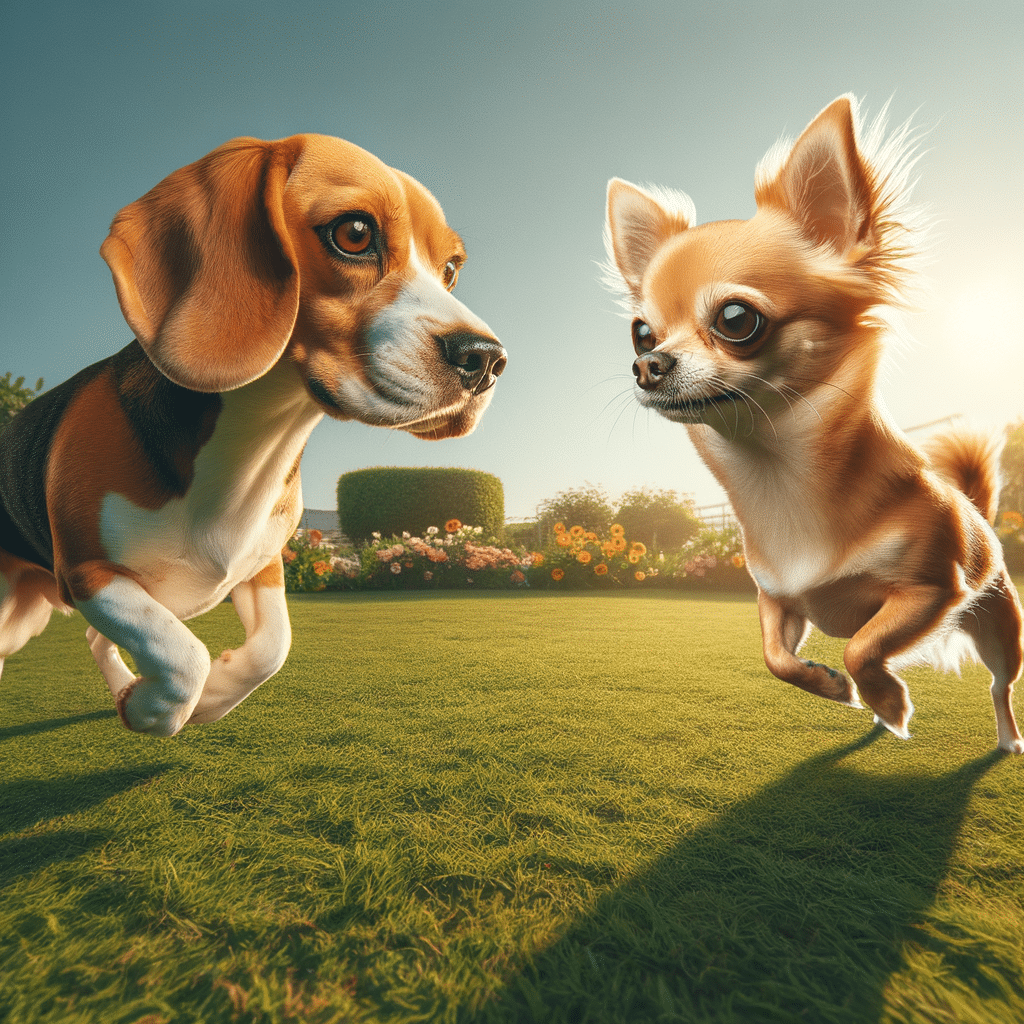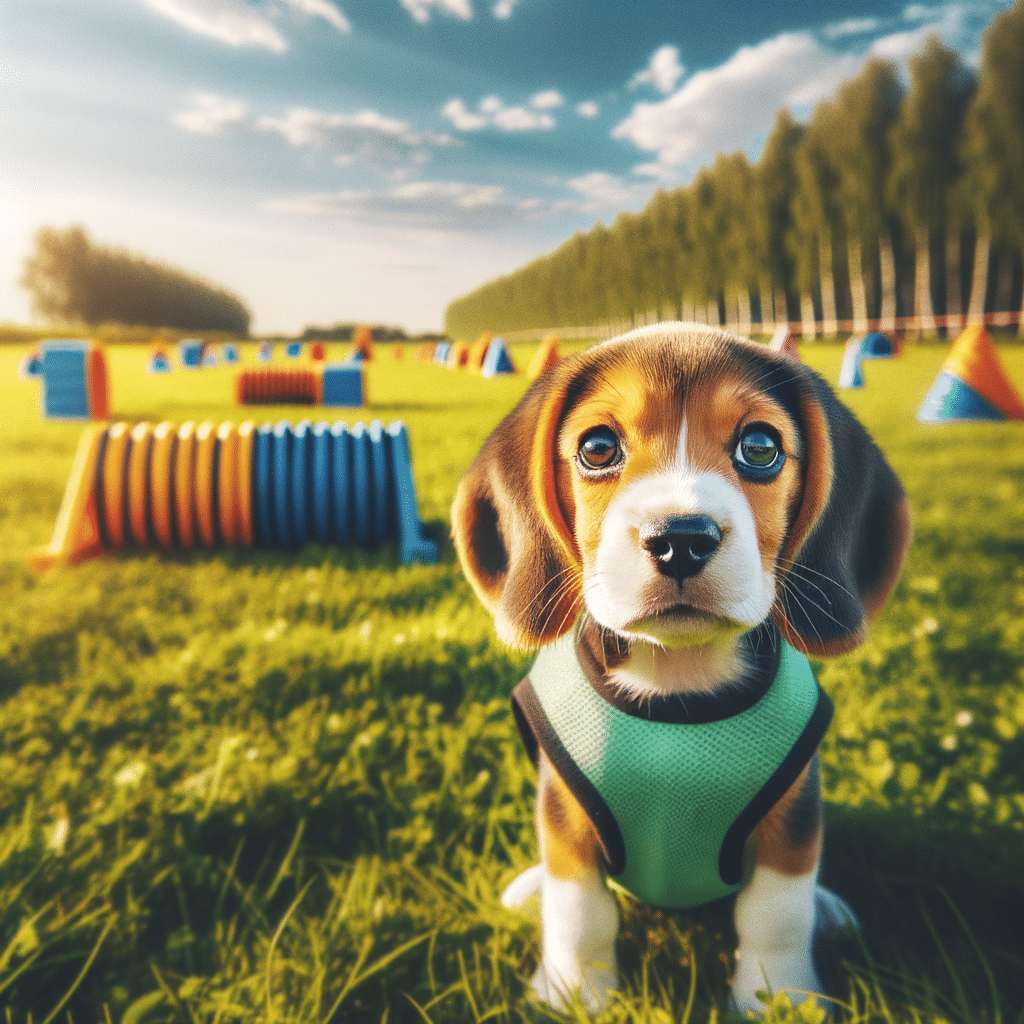House-training a beagle requires patience, consistency, and an understanding of their unique characteristics. Beagles are an energetic and intelligent breed with instincts from their history as scent hounds. This strong sense of smell can sometimes lead them to be easily distracted, making house training a unique challenge that requires a tailored approach.
In This Article
It’s important to start training your pup early, especially as young as eight weeks, to set the groundwork for good behavior. Even adult beagles can be successfully house-trained with the proper guidance and techniques. If you’re wondering how to house-train your beagle pup, this article will take you through the process.
Ensuring a beagle’s successful house training goes beyond potty training. Obedience training and command recognition are crucial for keeping your beagle’s attention. They also help create a communicative relationship between you and your dog. Proper training and your beagle’s health go hand in hand because dogs respond best when physically and mentally stimulated.
Highlights
- Early and consistent training is crucial for beagles.
- Obedience commands help with successful house training.
- A healthy beagle is easier to house-train.
Understanding Beagle Behavior
Beagles are known for their keen sense of smell and tracking instincts, but their engaging personality makes them great pets. Recognizing this dog breed’s distinct behavior helps with successful house training.
Exercise Needs
Beagles are high-energy dogs that need enough exercise to maintain their health and energetic personality. Daily walks and playtime help them burn off energy. Without this, your beagle may become restless and more likely to engage in undesirable behaviors.
Vocalization Tendencies
Beagles have an instinct to bark and howl. However, you can manage this behavior with proper training and redirecting your beagle’s energy to more constructive activities like dog sports. Regular interaction and exercise are effective ways to reduce excessive barking.
Learning Traits
- Stubbornness: Beagles may show stubborn behavior, making consistency and patience key to successful house training.
- Intelligence: Beagles are intelligent, but their independent nature sometimes overshadows their willingness to follow commands.
- Adaptability: These pets adapt well to positive reinforcement. Rewarding good behavior with treats can improve the learning process.
Understanding these behaviors allows you to create training strategies that match your puppy’s natural tendencies. This will likely make the house training process more enjoyable for you and your pup.
Fundamentals of House Training
House training a beagle requires patience, a structured routine, and positive reinforcement. Combining these elements can create a positive learning environment for your puppy.
Setting Up a Routine
Consistency is key in successfully house-training a beagle. Establish clear patterns for eating, potty breaks, and sleeping to help the puppy learn what is expected. Below is an ideal daily schedule to help maintain consistency:
- Morning: First potty break immediately after waking up.
- Feeding: Offer food at the same times each day and allow 15–30 minutes to eat before removing the bowl.
- Potty Breaks: Schedule them after every meal, playtime, nap, and before bedtime.
Crate Training Basics
Crate training is an essential part of house training. A well-sized crate provides a safe, contained area for your puppy. The safe space makes accidents less likely and provides your pup with a personal space. A beagle crate should:
- Be big enough for the dog to stand, turn around, and lie down comfortably.
- Not be too spacious to prevent the puppy from choosing one corner as a bathroom spot.
The crate becomes a personal space for your puppy and can regulate their need for potty breaks and discourage accidents inside the crate.
Positive Reinforcement Techniques
Rewarding a beagle for good behavior reinforces that behavior. When it comes to house training, use the following positive reinforcement methods:
- Offer treats immediately after the puppy uses the potty area correctly.
- Use specific commands or words like “go potty” to create association.
- Provide plenty of praise and affection when the puppy follows the desired behavior.
Remember, your reaction to accidents should be neutral. Instead, focus on encouraging and rewarding good habits.
Obedience Training and Commands
Obedience training ensures your beagle behaves well inside and outside the home. This section provides guidelines on teaching basic commands and correcting common behavior issues to create a positive relationship between you and your beagle pup.
Teaching Basic Commands
When training your beagle, use clear cue words to teach basic commands. The most basic commands include “Sit,” “Stay,” “Come,” and “Fetch.” Consistency is key; always use the same words to avoid confusing your dog. To effectively train a beagle, follow these simple steps:
- Sit: Hold a treat close to your pet's nose and slowly lift your hand above its head. As its head goes up, its bottom will naturally lower. Once in a sitting position, say “Sit,” give the treat, and show affection with praise.
- Stay: Ask your beagle to sit, then open your palm in front of its face and say “Stay.” Take a few steps back. If the beagle stays, reward it with a treat and praise. Gradually increase the distance and duration.
- Come: For greater control at the start, use a leash and collar or harness. Get down to the beagle’s level and say “Come” while gently pulling on the leash. When the beagle follows the command, reward it with affection and treats.
Use a positive reinforcement strategy during training sessions. Rewarding your dog encourages them to repeat the good behavior. Introduce distractions gradually to ensure your beagle can follow commands in different environments and consistently follow your commands.
Correcting Common Behavior Issues
Understanding the actions and signs leading to common behavior issues such as barking, chewing, and biting is important when addressing them. Be patient and consistent when correcting unwanted behaviors.
- Bark control: Determine why your beagle barks. If it’s because it wants attention, ignore the barking and reward it when it is quiet. For excessive barking, use a command such as “Quiet” and reward compliance.
- Chewing: Provide chew toys and praise your pet when they chew on them instead of furniture. Keep personal items out of reach, and use deterrent sprays if needed.
- Bite inhibition: Teach bite control by making a clear yelp when bitten and then ignoring your pet briefly. This action copies the natural feedback your beagle might receive from their siblings during play.
Always approach training with composure and assertiveness. Remember that leash, collar, or harness training is essential for managing bad behavior, particularly when your beagle gets distracted or overexcited. Remember, the goal is to guide your dog toward making the correct decisions, not to force compliance.
Maintaining Training and Health
Be consistent when housetraining your beagle. A healthy beagle is more willing to learn, so pay attention to its health needs. Provide regular exercise and play. Stay up-to-date with vaccinations and healthcare to ensure a healthy, happy, well-behaved pet.
Regular Exercise and Play
Beagle puppies are energetic and need regular exercise to maintain their health and ensure successful housebreaking. Include structured activities like walks and fetch, which help them understand boundaries and prevent unwanted behaviors. Engage them with various toys and chew toys, especially during teething. This helps keep your beagle entertained and prevents them from chewing on inappropriate items. Use gates or indoor pens to provide a designated area for supervised play and rest for containment within the home.
- Exercise: Daily walks, playtime with other dogs, and active games.
- Toys: Durable chew toys to manage teething and keep your pet occupied.
Healthcare and Vaccinations
A structured healthcare routine, including timely vaccinations, is critical to your puppy’s well-being. This ensures the puppy’s immune system can protect it from common canine diseases. Discuss a vaccination schedule with a veterinarian and stick to it. Use an enzyme cleaner for accidents during potty training to sanitize your home and eliminate odors that might attract the puppy back to the same spot. Remember, a healthy puppy is more receptive to training and can better adapt to housebreaking and potty training.
- Vaccinations: Follow a vet-recommended vaccination schedule.
- Enzyme Cleaner: Clean accidents thoroughly to prevent remarking.
Frequently Asked Questions
This section provides information about common questions pet owners ask about beagle training. It covers best practices and addresses nighttime training.
What are the best practices for crate training a beagle puppy to aid in-house training?
To successfully crate-train a beagle puppy, choose a comfortable crate that’s only large enough for the puppy to stand up and turn around. The puppy should associate the crate with positive experiences, so include comfy bedding and offer treats and praise when the puppy enters the crate willingly.
What steps should be taken to effectively potty-train a beagle at night?
Nighttime potty training for a beagle should involve a consistent routine before bedtime. The routine should include a final opportunity to go potty. Ensure the puppy’s crate is near your bedroom so you can hear if they are restless and need to go out during the night.
How can I prevent my beagle from peeing indoors after being house-trained?
Maintain a consistent schedule for feeding and bathroom breaks. Identify a consistent place your beagle can eliminate to ensure they understand the expected behavior. If accidents occur, clean the area thoroughly to remove odors that might attract them back to the same spot.
What is the average time frame for successfully potty training a beagle puppy?
The potty training process for a beagle puppy generally takes several weeks to months, often around 4 to 6 months of consistent training. Each puppy is unique, and patience is key, as some may take more or less time to fully grasp house training.
Are there particular challenges to house training a beagle, and how can they be overcome?
Beagles can be stubborn and easily distracted by scents, making house training more challenging. Overcoming these traits involves patience, consistency, and positive reinforcement. Approach training in short, focused sessions and keep a keen eye for when they signal a need to go outside.
How should an older beagle be introduced to potty training routines?
When introducing potty training to an older beagle, start as you would with a puppy, but consider the adult dog’s longer attention span and bladder control. Establish a strict routine, use praise and treats for rewards, and be patient. Older dogs can learn just as effectively as puppies, although sometimes slower.






